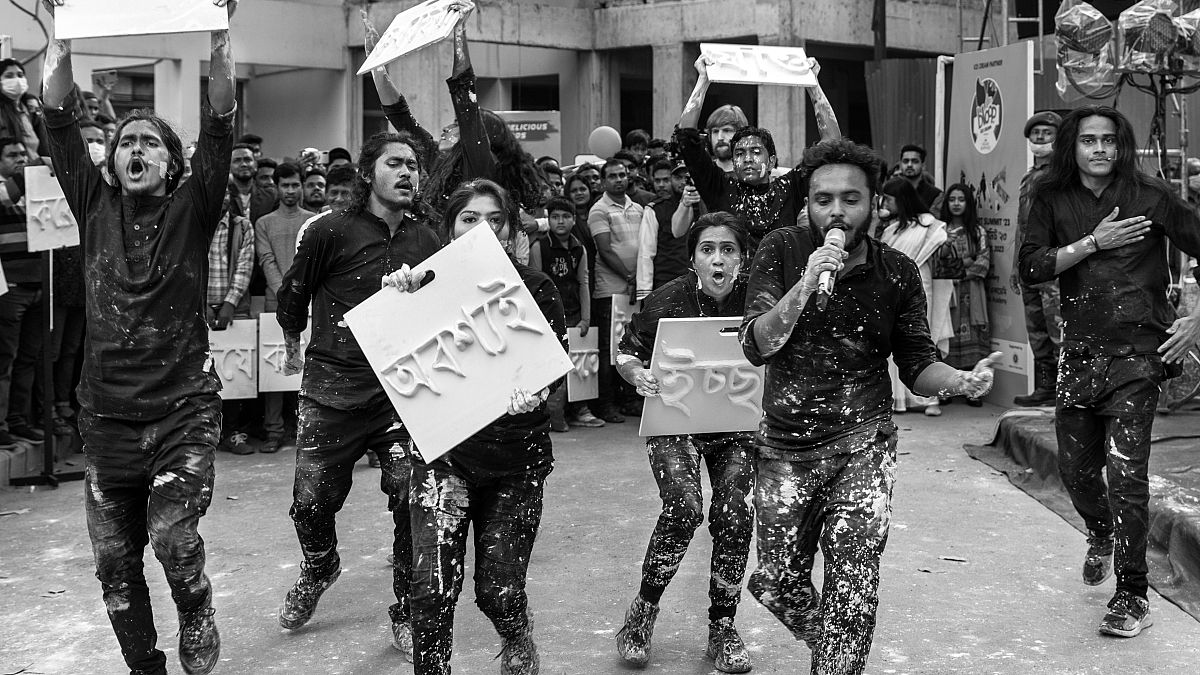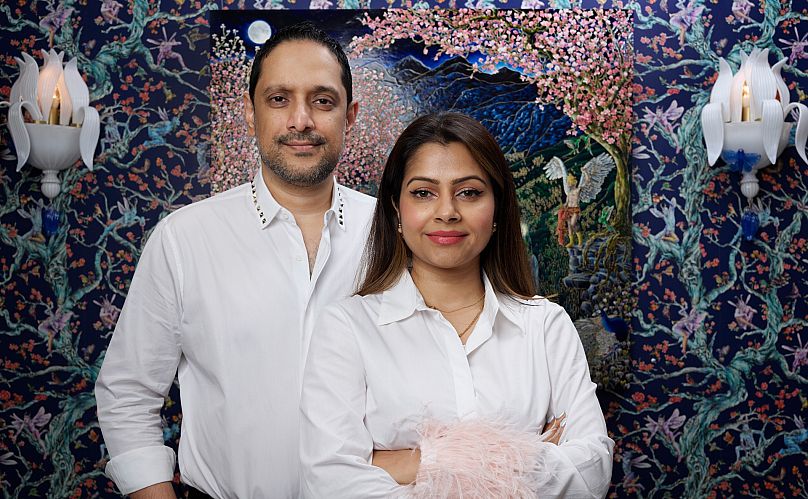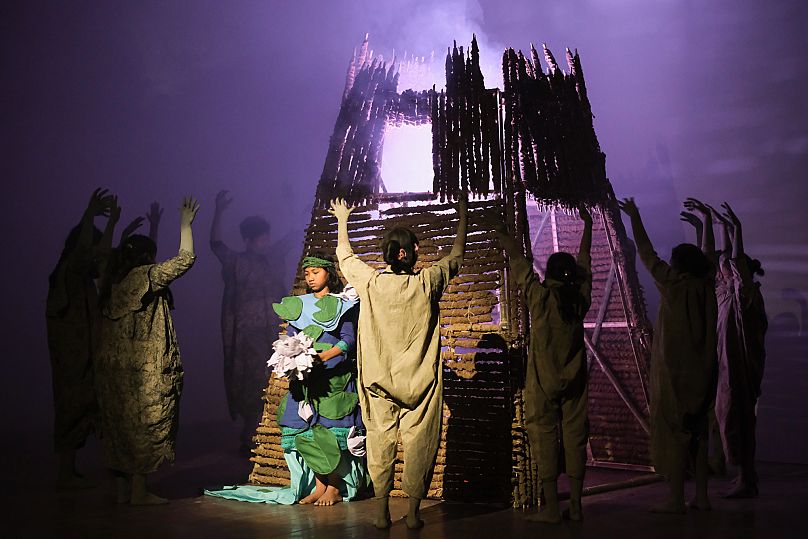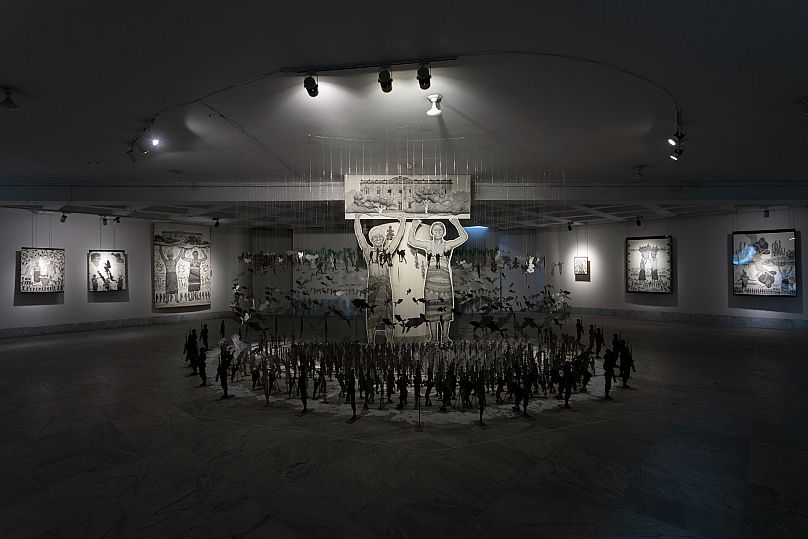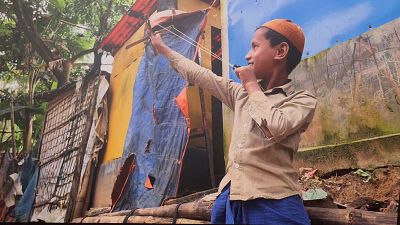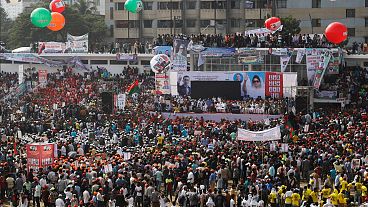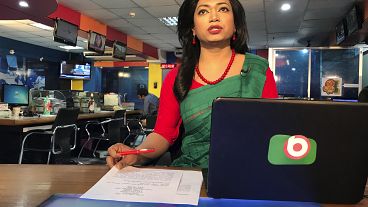As part of our continuing coverage of Women's History Month, we spoke to Nadia Samdani, co-founder of Dhaka Art Summit biennially in Bangladesh, a country grappling with a climate emergency.
In a country grappling with a climate emergency, Nadia Samdani is using art to tell the story of hope in times of crisis. Her Dhaka Art Summit is the world's largest research and exhibition platform for art from South Asia and is held biennially in Bangladesh which is celebrating its national day of independence on March 26.
Together with her husband and business partner, Samdani founded the Samdani Arts Foundation in 2011 to bring international exposure to the work of contemporary artists and architects from Bangladesh and South Asia.
In 2017, the art patrons became the first South Asians to receive the prestigious Montblanc de la Culture Arts Patronage Award which pays tribute to individuals who work behind the scenes to advance arts and culture.
Last month the power couple celebrated the sixth edition of the Dhaka Art Summit which showcased the work of 120 artists and was attended by 572,000 visitors over the course of its nine-day (free-to-visit) run. Most of the works - by local and international artists - focused on re-imagining a hopeful future inspired by the Bangladeshi experience of climate change and the country’s resilience, found both in its nature and its population.
The sixth Dhaka Art Summit
When it comes to the climate emergency, Bangladesh is one of the world’s most vulnerable countries – it is regularly hit by increasingly powerful cyclones and flooding, while rising sea levels pose nothing short of an existential crisis. It is even estimated that by 2050, one in every seven people in Bangladesh will be displaced by climate change. With these realities in mind, you’d think that an art show on climate in the country’s capital would be characterized by gloom and despair. Not so.
How do you tell the story of crises while facilitating hope? This was one of the key questions posed at this year's Dhaka Art Summit held at the Bangladesh Shilpakala Academy.
“In a world that is increasingly divided, art shows us the incredible things that humanity can create – and this brings needed hope to the world,” said Samdani.
The duality of crisis and hope was manifested in the DAS 2023’s subtitle, Bonna (meaning “flood” in Bengali, the national language of Bangladesh).
So, what is Bonna?
In Bangladesh where Bonna is also a common girls’ name, floods are not always synonymous with disaster, but could also denote promise. During the Bengali New Year, Bangladeshi people sing a popular song, Esho He Boishakh (I call on you), calling forth storm waters to wash away the ugliness of the past year. After all, as Chief Curator Diana Campbell told Euronews Culture. “Another way the word, ‘flood’, is used is floods of joy, floods of emotion.” With this viewpoint, DAS 2023 invoked visitors to interpret Bonna as a complex symbol-system.
So, too, Bonna is a child, speaking to the world from Bangladesh, questioning why the words for weather are gendered and imploring the international community to explore the connection between gender, climate change, and the built environment. Her lived experience of climate change and the unbridled potential to create change underpinned the entire program, but were particularly vivid in the summit’s headline exhibition, Very Small Feelings, a collaboration between DAS and India’s Kiran Nadar Museum of Art which gathered together stories, rituals and characters from across South Asia.
Among the many manifestations of Bonna was Gidree Bawlee Foundation for the Arts’s enchanting performance showing Bangladeshi children imagining the character of Bonna via puppetry. Similarly, local artist Yasmin Jahan Nupur’s participatory performance and space, titled Home, was an invitation to join the artist in searching for the smells, places and sensations of her childhood, while engaging in conversation about one’s own memories. After all, what better way to evoke childlike wonder than by fusing an art show with the playground? Certain works were viewed by jumping on mini trampolines or sitting on swings, infusing the exhibition experience with a sense of playfulness.
Attention seeking art
Among the first works to greet visitors was Joydeb Roaja’s immersive installation, Submerged Dream 8. It showcased the struggle of the over 100,000 indigenous Chakma people who were evicted from their ancestral land in 1962 upon the construction of the Kaptai dam. Roaja’s work portrayed dams and flooding as tools of violence against indigenous peoples. It also spoke to the unbreakable bond between indigenous communities and their lands – a weapon of resistance against oppression.
Although the “A” in DAS stands for art, the DAS 2023 displayed the work of architects as well. Found at the intersection of art and architecture, Suchi Reddy’s Between Earth and Sky set up a series of “mirages” that blurred the lines between physical constructed spaces and imagination, allowing the mind to run free to explore limitless architectural possibilities. Reddy termed this as “design justice”, where empathy and equity are reflected in the built environment.
Another architect, Rizvi Hassan, interpreted Bonna differently. Using miniature models made of regenerative materials like bamboo and thatch, he replicated the refugee camps around Cox’s Bazaar in Bangladesh where floods of Rohingya refugees seek shelter. For him, architecture has the propensity “to mitigate conflicts, to enrich the ground, or just to ensure the basic but very important needs to have a better quality of life”.
Among the most world-renowned artists taking part at DAS 2023 was Antony Gormley who returned to South Asia for the first time in 50 years for this summit. He worked with local craftspeople to create Turn: a “drawing in space” of 2.5 km of bamboo, exuding energy as it resisted containment by the building.
Rather than the “national and individual competitiveness” that Gormley believes art biennales encourage, DAS is a place of dialogue, where the ideas behind an artwork – on climate change or other questions – and the conversation they give rise to, are equally as important as the works themselves.
“At DAS, I sense that the acquisitiveness of the art fair has been replaced by another kind of exchange where the spirit of making art, rather than showing off a finished work, becomes the most valuable thing to be shared,” he told Euronews Culture.
